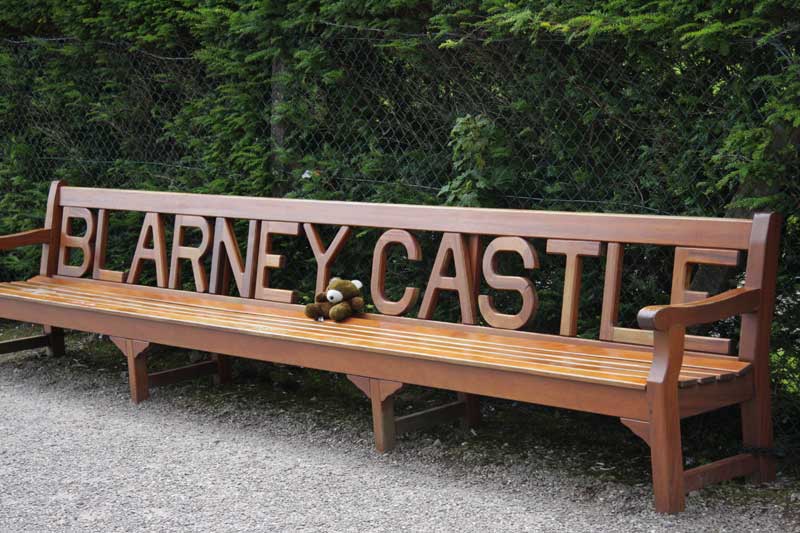
The current Blarney Castle is the third to be built on this site and has been there since 1446.
The Blarney Stone, embedded in a wall at the top of the castle, will give the gift of eloquence
to the person who kisses it. Also seen in this picture is the Poison Garden - more on that later.
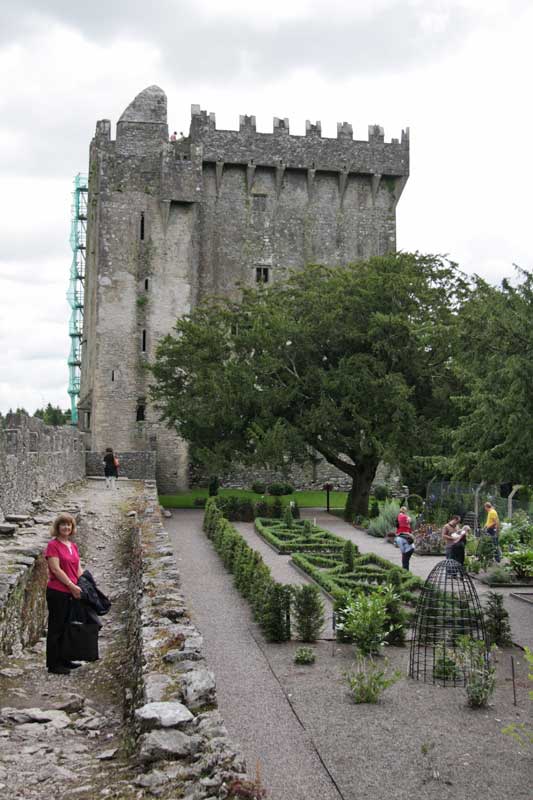
Kissing the Blarney Stone was different than I had imagined it. Let's have a look ...
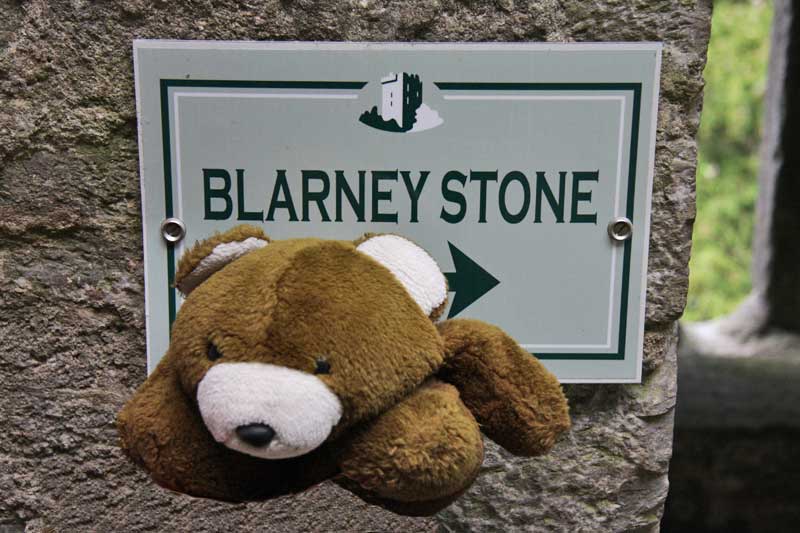
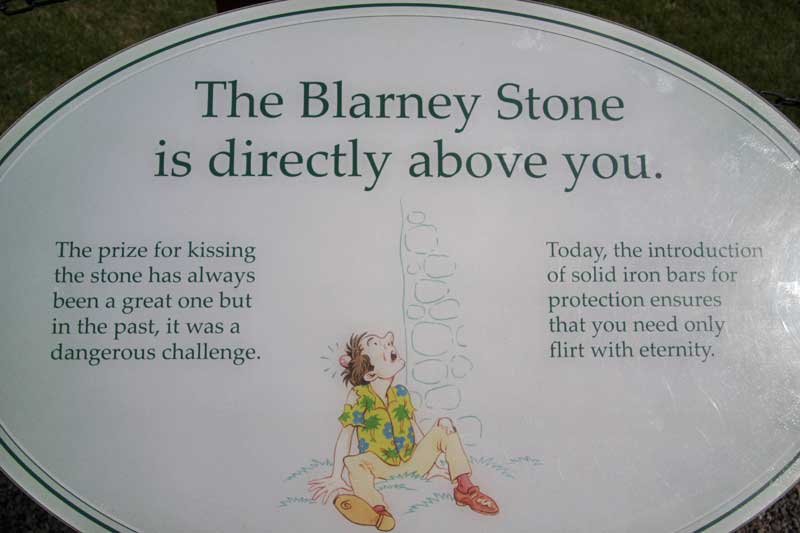
After climbing 127 steps to the fourth floor of the castle, "Stone kissers" lie on their backs
over an open edge, with an 85-foot drop below them. They are held in place by a guide and there
are now metal bars to keep any tourists from falling through the gap between the walkway and the wall.
The kisser leans back with their head upside down, where the stone can be reached. You can see
the shadow of either a tourist or the guide at the top center of this picture, taken from the ground.
A closeup of a victim ... er, a person ... in place to kiss the stone is in the next photo.
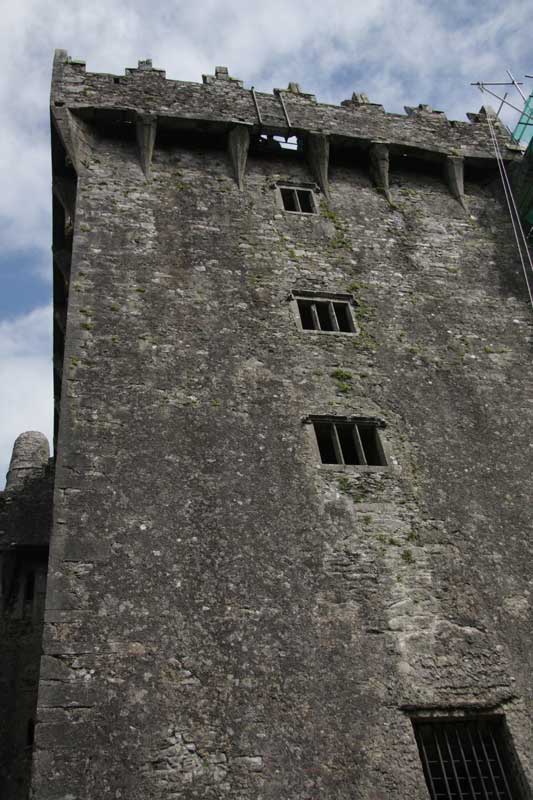
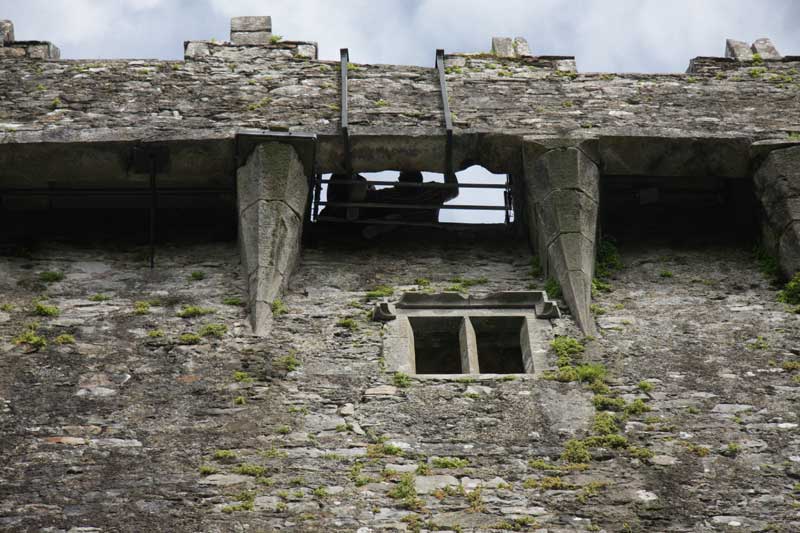
This pic was taken from the walkway at the top of the castle, looking into the center, while
waiting to see/kiss the Blarney Stone. From the sign (next pic), castle occupants still had methods
of defense even when the castle's outer doors had been compromised by approaching invaders.
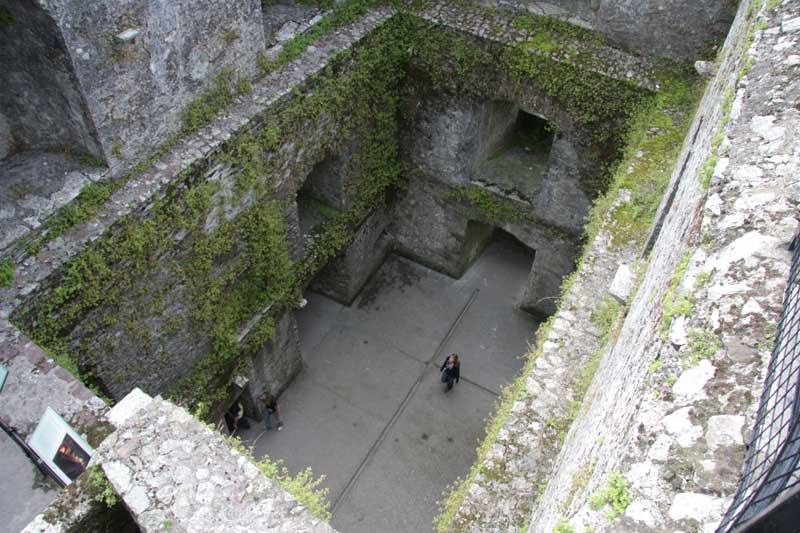
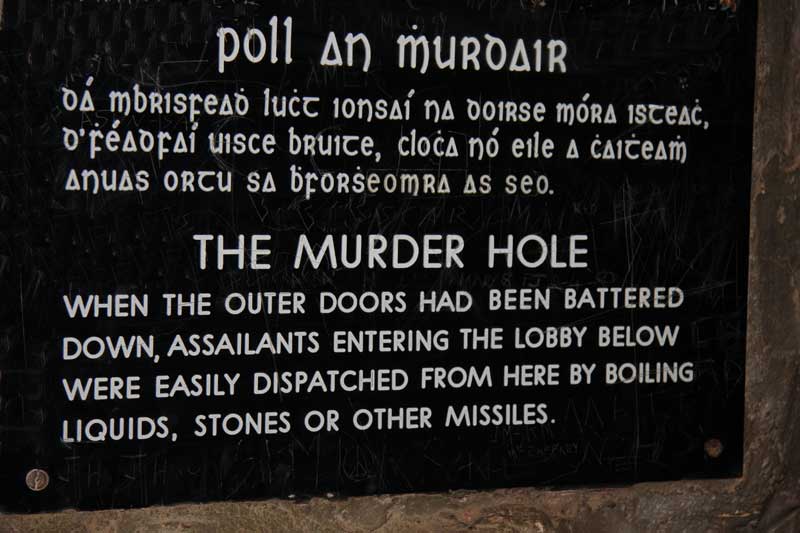
The line of tourists waiting to see the Blarney Stone - note the guide kneeling in
front of the Stone (top, center), ready to help the next "kisser" get into position.
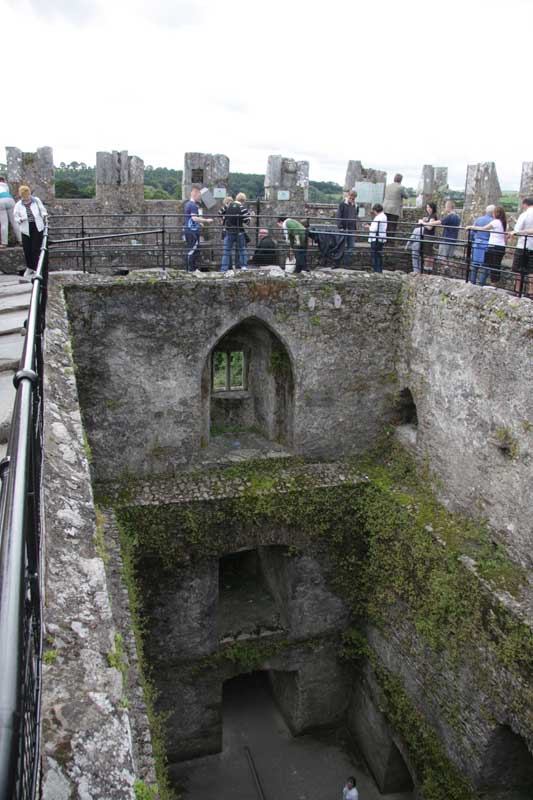
A view of the beautiful Irish countryside as seen from atop Blarney Castle.

A closeup of the guide helping a tourist as she kisses the Stone.
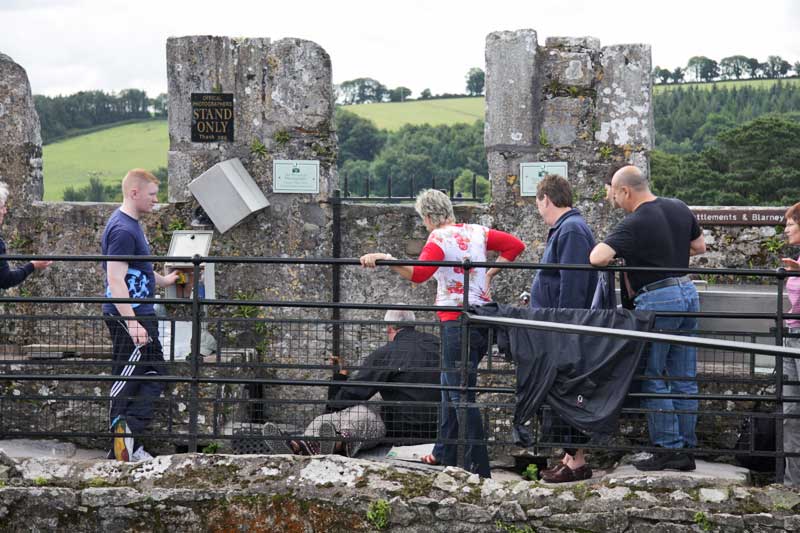
Finally, it's Mary's turn to kiss the Blarney Stone. People with a fear of heights still
have some difficulty getting into this odd position, over the 85-foot dropoff.

As she leans back to kiss the Stone, you can see the bench on the ground below her,
the same bench that is seen in the first picture in this series (with Snuffles on it).
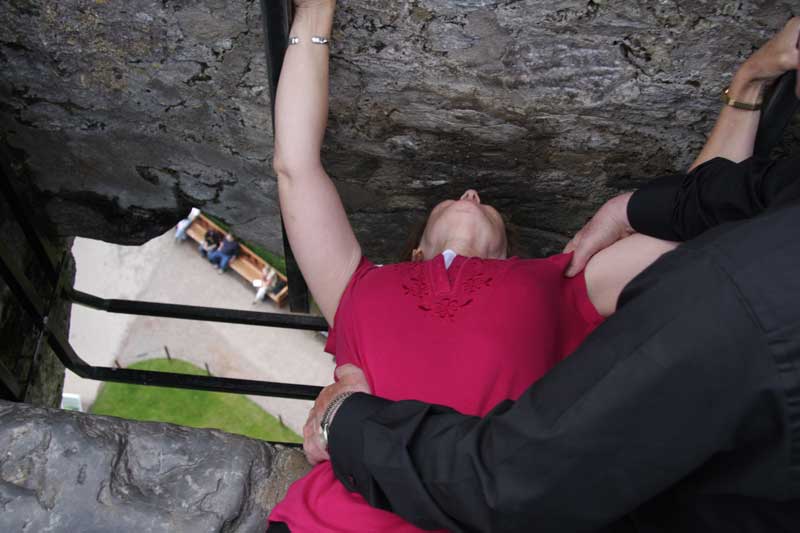
Stand back! She looks like she's about to launch into a very long speech!
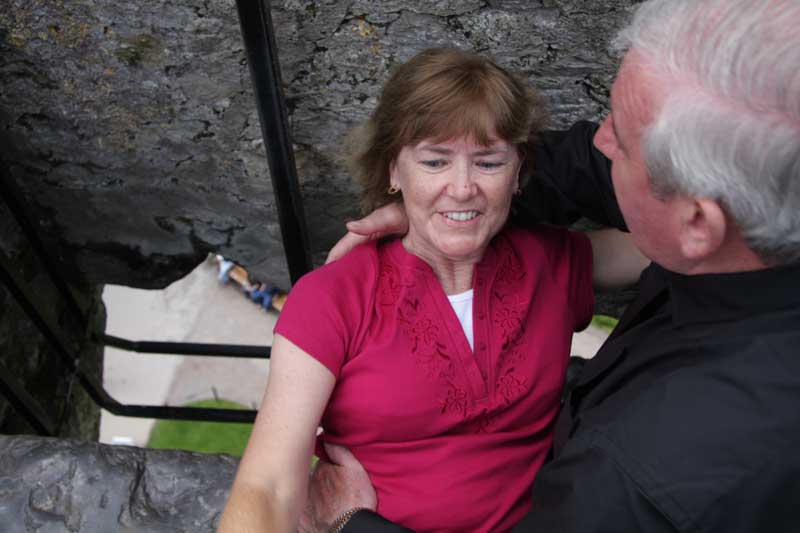
The line continues to move toward the Stone ... all day ... every day. A good money maker!
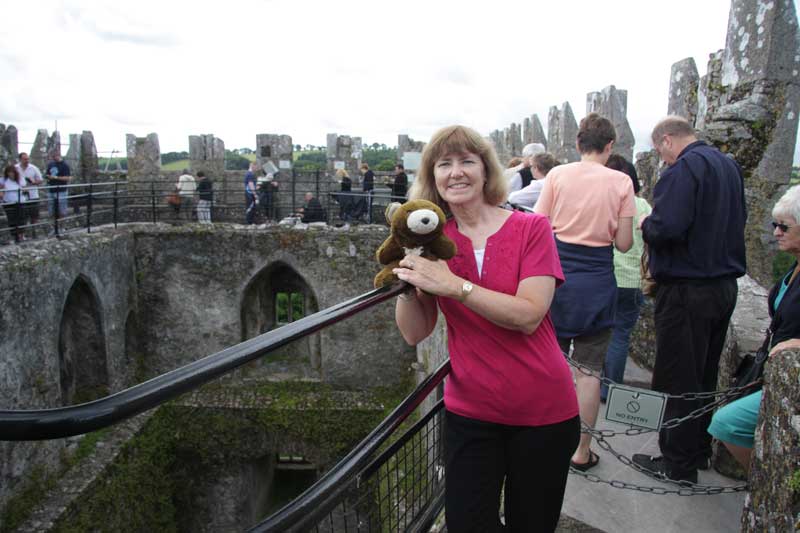
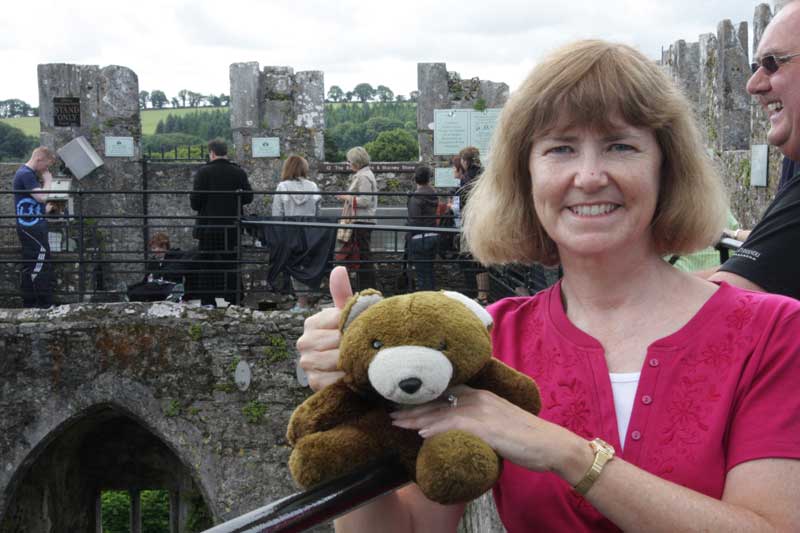
The Blarney House was built on the grounds of the castle in the 19th century and is currently used as a family home (!).
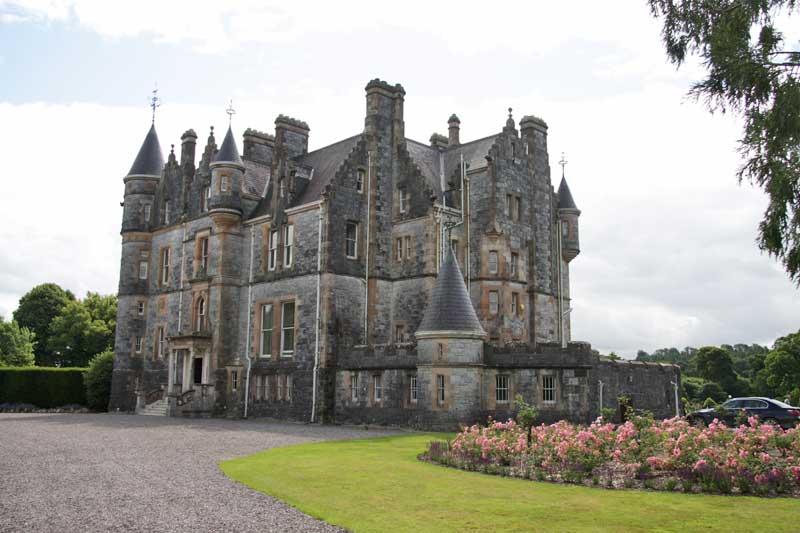
This is the Poison Garden, featuring examples of plants considered "poisonous" by researchers.

The foxglove plant produces digitalis, used as cardiac medicine, but also capable of causing a heart attack if misused.
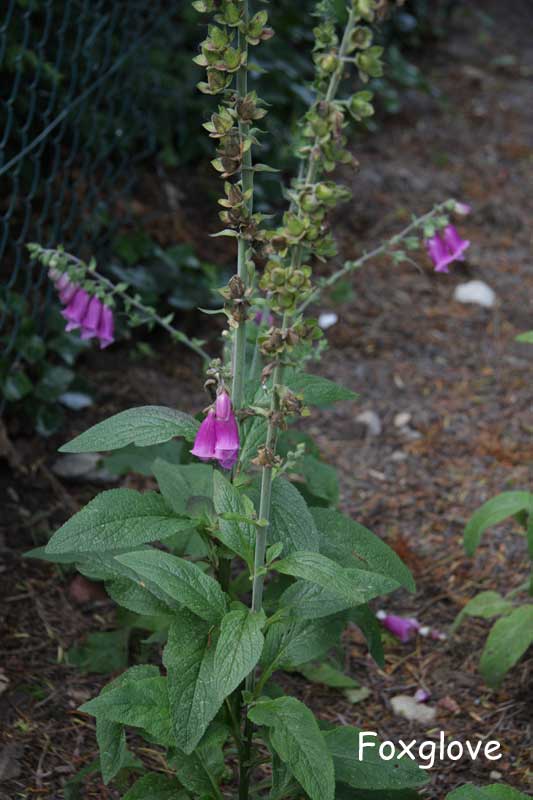
The sign is a little hard to read but a couple of key points are, "... causing paralysis
of the central and peripheral nervous system. Death is usually the result of respiratory
failure. It is generally agreed that it was poison hemlock that killed Socrates."
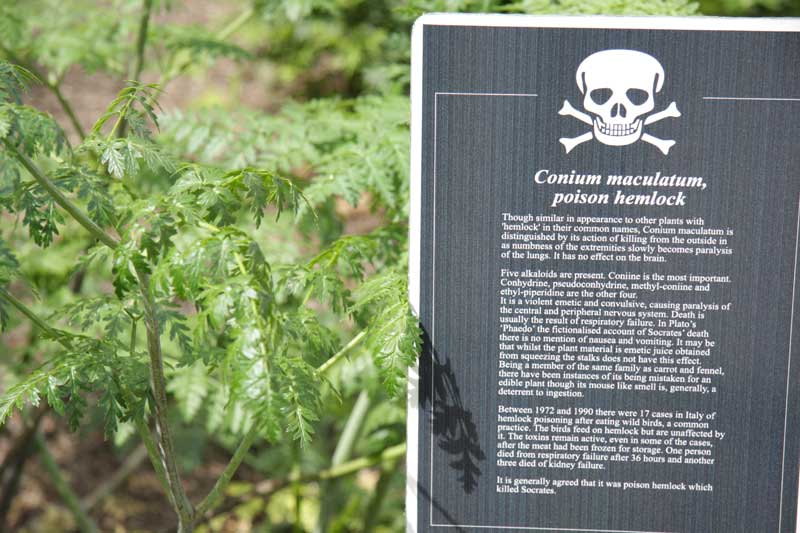
In addition to marijuana, there are also samples of an opium poppy, poison ivy and poison oak.
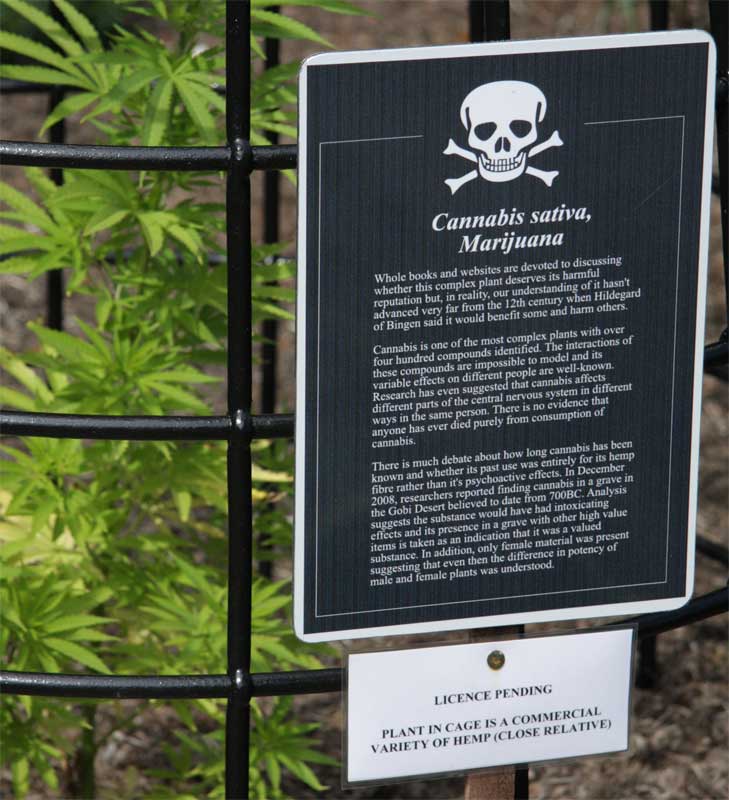
Now let's move on toward Dublin, stopping at the Rock of Cashel and Kilkenny.
Click to view Kilkenny.

Return to top level